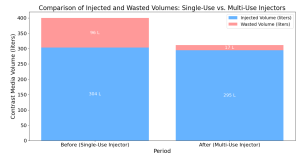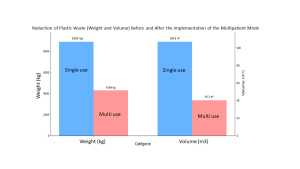Congress:
ECR25
Poster Number:
C-27166
Type:
Poster: EPOS Radiologist (scientific)
DOI:
10.26044/ecr2025/C-27166
Authorblock:
L. Malafosse, K. Bellenger, M. Chodorowski, C. Lambert, D. Ben Salem; Brest/FR
Disclosures:
Louis Malafosse:
Nothing to disclose
Kevin Bellenger:
Nothing to disclose
Mateusz Chodorowski:
Nothing to disclose
Camille Lambert:
Nothing to disclose
Douraied Ben Salem:
Nothing to disclose
Keywords:
Contrast agents, CT, Contrast agent-intravenous, Economics
Results showed a remarkable reduction in discarded contrast, from 96 liters to 17 liters over three months (77% decrease).

Fig 1: Figure 1 : Comparison of injected and wasted volumes : single-use vs multi-use injectors

Fig 2: Figure 2 : Reduction of Plastic Waste (Weight and Volume) Before and After the Implementation of the Multipatient Mode

Fig 3: Figure 3 : Comparison of CO²e emissions for single-use and multi-use injectors